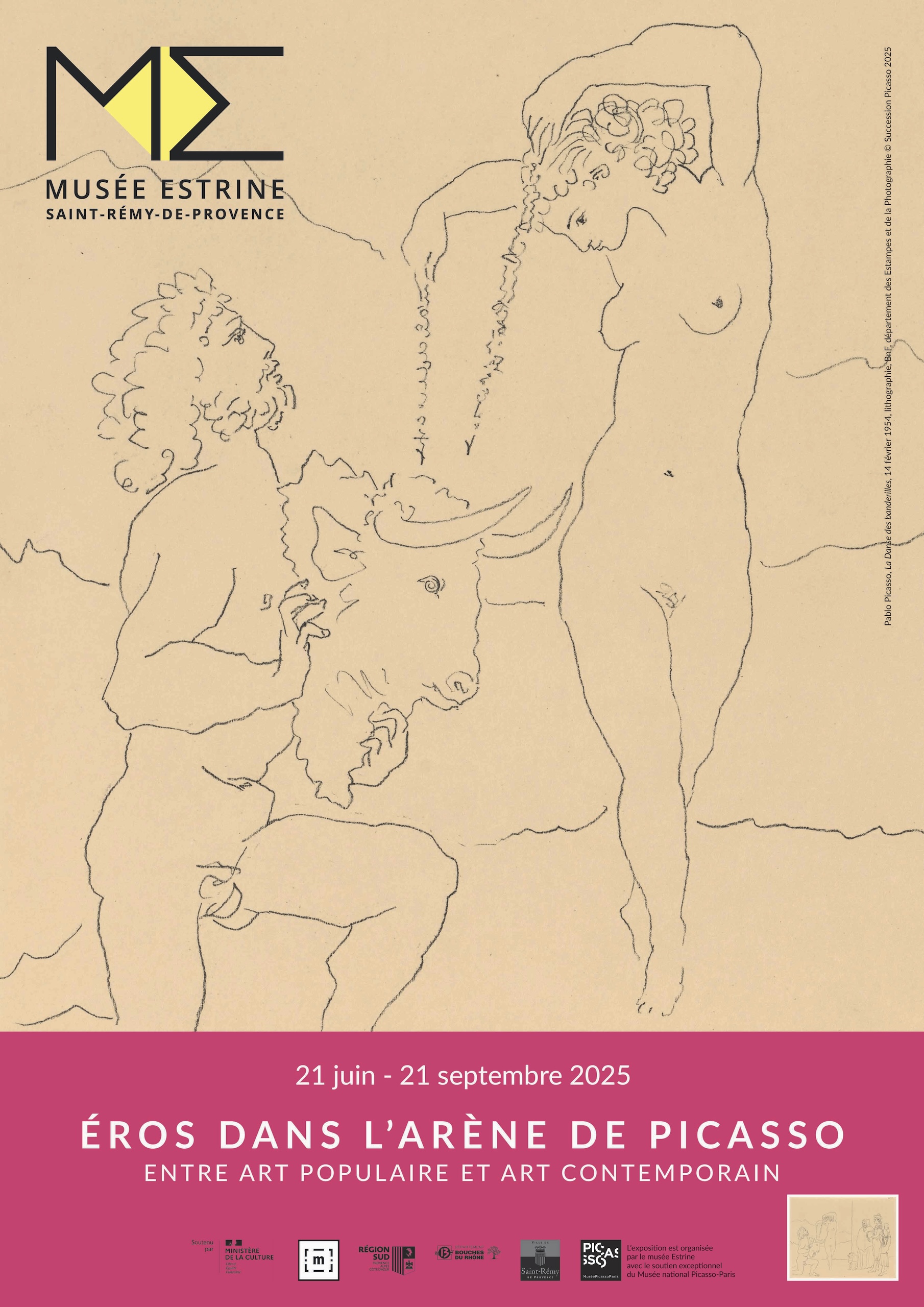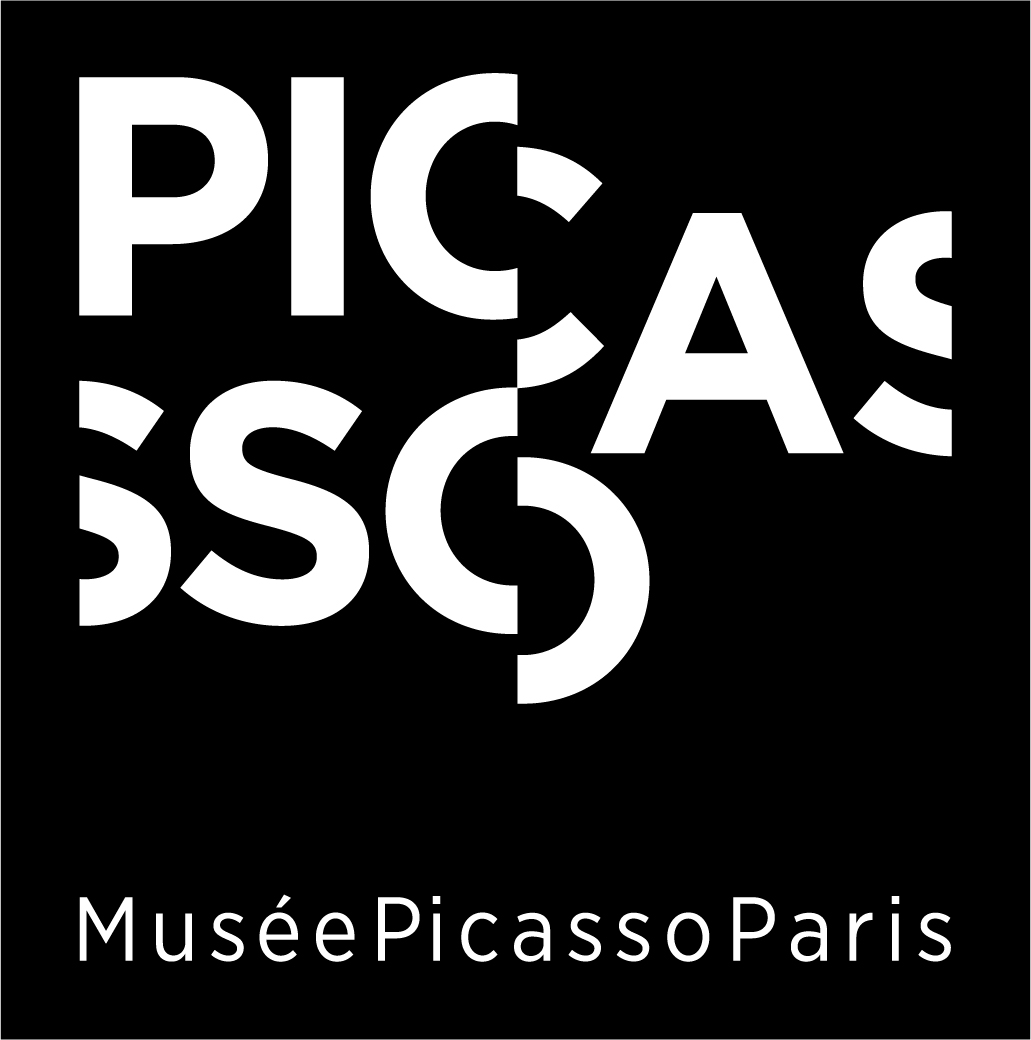Éros dans l’arène de Picasso
Entre art populaire et art contemporain
Musée Estrine – Saint-Rémy-de-Provence
21 juin — 21 septembre 2025
Le Musée Estrine, à Saint-Rémy-de-Provence, consacre son exposition d’été 2025 à Pablo Picasso. Intitulée Éros dans l’arène, elle explore la richesse symbolique de son œuvre à travers les figures du taureau et de la femme. Visible du 21 juin au 21 septembre, cette exposition unique replace Picasso dans un dialogue entre art populaire et art contemporain.
Dans les premières figures représentées par Homo sapiens, « tout semble s’orienter […] autour de la femme et du taureau » selon l’archéologue Jean-Paul Demoule.
Ce constat pourrait s’appliquer à l’œuvre monumental de Picasso où, depuis ses premiers dessins d’enfant jusqu’à son dernier tableau inachevé, les figures de la femme et du taureau sont significatives de son évolution intime, esthétique, idéologique.
Mais le rapport de Picasso aux femmes et sa passion pour le combat de taureaux suscitent aujourd’hui un débat, parfois explosif, qu’un examen attentif de l’œuvre suffit à déminer. Picasso s’y révèle très éloigné des stéréotypes : loin d’être soumises ou maltraitées, les femmes s’y montrent remplies de compassion ou de tendresse pour le taureau ou son avatar humain, parfois même puissantes et dominatrices.
Quant au taureau, jamais dans l’histoire de l’art un animal n’avait traversé un œuvre entier jusqu’à l’obsession comme chez Picasso. « Animal totémique » selon Françoise Gilot, il a permis à l’artiste d’enraciner son hispanité dans la culture de son Andalousie originelle comme dans celle du Midi français. Aussi faut-il éclairer l’homme et contextualiser ses créations pour mieux s’abandonner à ce qui seul importe : l’émotion procurée par un art mouvant, irréductible au sujet qui l’habite.
Parce qu’elles s’en sont nourries, nous avons confronté les œuvres de Picasso à celles de l’iconographie populaire dont il était friand, à celles des prédécesseurs qu’il a admirés ou des contemporains qu’il a côtoyés. Nous croiserons également le regard porté par Picasso sur femmes et toros avec celui d’artistes actuels issus du Sud tels que Pilar Abarracín, Vincent Bioulès, Sophie Calle, Clara Castagné, Jean-Paul Chambas, Lucio Fanti, Jean-René Laval, Christian Milovanoff, Axelle Remeaud et Claude Viallat.
Annie Maïllis, commissaire de l’exposition
Eros in Picasso’s arena, between popular and contemporary art
In the first figures represented by Homo sapiens, “everything seems to revolve […] around the woman and the bull”, according to archaeologist Jean-Paul Demoule. This observation could be applied to Picasso’s monumental work, where, from his earliest childhood drawings to his last unfinished painting, the figures of the woman and the bull are significant of his intimate, aesthetic and ideological evolution. Today, however, Picasso’s relationship with women and his passion for bullfighting give rise to a sometimes explosive debate, which a careful examination of the work is enough to defuse. Picasso reveals himself to be far removed from stereotypes: far from being submissive or mistreated, women are shown to be full of compassion or tenderness for the bull or its human avatar, and sometimes even powerful and dominant. As for the bull, never before in the history of art has an animal run through an entire work to the point of obsession, as with Picasso. A “totemic animal” according to Françoise Gilot, it enabled the artist to root his Hispanic identity in the culture of his native Andalusia, as well as in that of the French Midi. So it’s essential to shed some light on the man and contextualize his creations, the better to surrender to what matters: the emotion generated by a moving art, irreducible to the subject that inhabits it. Picasso’s works have been compared with those of the popular iconography he was so fond of, and with those of predecessors he admired and contemporaries he encountered. We will also compare Picasso’s view of women and toros with that of contemporary artists from the South, such as Pilar Abarracín, Vincent Bioulès, Sophie Calle, Clara Castagné, Jean-Paul Chambas, Lucio Fanti, Jean-René Laval, Christian Milovanoff, Axelle Remeaud and Claude Viallat.
Annie Maïllis, exhibition curator
Exposition organisée avec le soutien exceptionnel du Musée national Picasso-Paris et le concours de la famille Picasso.
Un catalogue de 100 pages a été édité par Lienart Editions à l’occasion de l’exposition.


